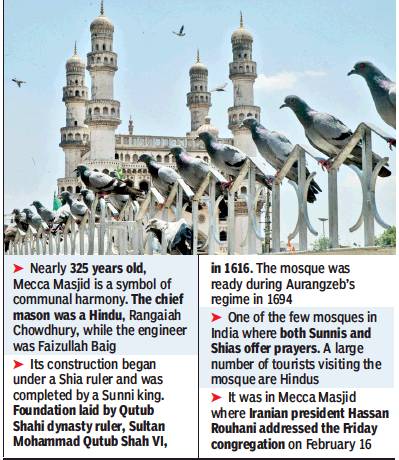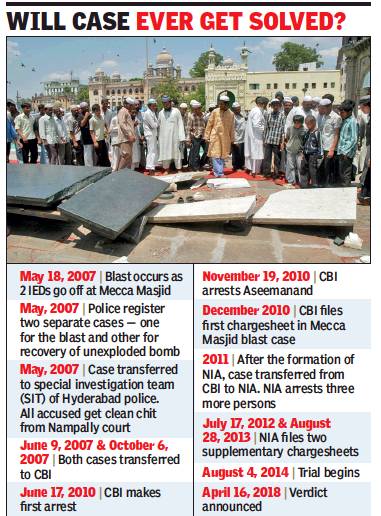Hyderabad: Mecca Masjid
(→Judge resigns after the verdict) |
(→Who bombed Mecca Masjid?) |
||
| Line 16: | Line 16: | ||
''1616- 2018: a brief history '' | ''1616- 2018: a brief history '' | ||
| − | |||
| − | |||
| − | |||
| − | |||
| − | |||
| − | |||
| − | |||
| − | |||
| − | |||
| − | |||
| − | |||
| − | |||
| − | |||
| − | |||
| − | |||
| − | |||
| − | |||
| − | |||
| − | |||
| − | |||
| − | |||
| − | |||
| − | |||
| − | |||
| − | |||
| − | |||
| − | |||
| − | |||
| − | |||
| − | |||
| − | |||
| − | |||
| − | |||
| − | |||
| − | |||
| − | |||
| − | |||
| − | |||
| − | |||
| − | |||
| − | |||
| − | |||
| − | |||
| − | |||
| − | |||
| − | |||
| − | |||
| − | |||
| − | |||
| − | |||
| − | |||
| − | |||
| − | |||
| − | |||
| − | |||
| − | |||
| − | |||
| − | |||
| − | |||
| − | |||
| − | |||
| − | |||
| − | |||
| − | |||
| − | |||
| − | |||
| − | |||
| − | |||
| − | |||
| − | |||
| − | |||
| − | |||
| − | |||
=The Mecca Masjid blast case, 2007= | =The Mecca Masjid blast case, 2007= | ||
Revision as of 20:47, 18 April 2018
This is a collection of articles archived for the excellence of their content. |
Contents |
The mosque

From: April 17, 2018: The Times of India
See graphic:
1616- 2018: a brief history
The Mecca Masjid blast case, 2007
A timeline
April 17, 2018: The Times of India’'

From: April 17, 2018: The Times of India
Twenty months after it took over the Mecca Masjid blast case from the Central Bureau of Investigation (CBI), the National Investigation Agency (NIA) claimed to have made two key arrests from Madhya Pradesh in December 2012.
The NIA had nabbed Rajendhar Chowdary, a 35-yearold farmer, and Tejram Parmar, a 31-year-old mason, for allegedly planting bombs at the historic mosque on May 18, 2007. Later, the NIA did not even include Parmar’s name in the chargesheet and Rajendhar was acquitted, bringing the terror narrative — that started as a cross-border Harkat-ul-Jihad al-Islami (HuJI) conspiracy and ended as a domestic Hindutva terror plot — back to square one.
After the blasts, the Special Investigation Team (SIT) of the Hyderabad police launched a probe and arrested several persons suspected to be HuJI operatives.
Five suspects, including an MBA student, were even sent to Bengaluru and subjected to narco analysis at Bowring and Lady Curzon Hospital, where they allegedly confessed to have carried out the terror strike with RDX supplied by their associates from Bangladesh.
Subsequently, the Mecca Masjid blast case was handed over to the CBI and two cases were registered by it in June and October, 2007.
When the CBI arrested Devendra Gupta, Lokesh Sharma and Naba Kumar Sarkar alias Aseemanand in 2010, who were also accused in the Ajmer Dargah blast case, the terror narrative took a new turn from HuJI to Hindutva.
Almost four years after the CBI started its probe into the case and filed a chargesheet accusing persons affiliated to various Hindu religious outfits of having planned and executed the blasts to avenge terror strikes on temples, the probe was handed over to the NIA in April 2011.
The NIA continued the line of investigation pursued by the CBI and arrested three more persons, including the alleged bomb planters — Rajendhar and Tejram — along with a textile businessman from Gujarat, Bharat Bhai. With the special court acquitting all the five accused, defence counsel claimed that the case was politically motivated and evidence was fabricated, while some victims rightly said that “justice delayed is justice denied”.
The verdict/ 2018
All Accused Acquitted
Srinath Vudali, Mecca Masjid Accused Acquitted, April 17, 2018: The Times of India’'

The 2018 verdict
From: Srinath Vudali, Mecca Masjid Accused Acquitted, April 17, 2018: The Times of India
Verdict Triggers Row Between BJP & Congress
Eleven years after a bomb ripped through Mecca Masjid, killing nine people, the NIA special court acquitted all five accused in a much-awaited verdict in a packed courtroom on Monday. Now, the 2007 bombing remains a terror mystery with two premier agencies, the Central
Bureau of Investigation and the National Investigation Agency, failing to gather evidence to nail the accused.
Around 11.30am, the operative portion of the judgment was read out by the fourth metropolitan sessions judge, K Ravinder Reddy, declaring acquittal of all five accused —Swami Aseemanand, head of the Vanvasi Kalyan Ashram, R-S-S vibagh pracharak Devendra Gupta, R-S-S karyakarta Lokesh Sharma, Hindu Vichar Manch member Bharath Mohanlal Rateshwar and Rajendar Chowdhary, a farmer. Nine people died in the May 18, 2007 blast and another five were killed in police firing after violence erupted.
The judge said he had carefully examined documents and material evidence placed on record and declared none of the allegations could be proved against any of the accused. “Hence, all five accused stand acquitted,’’ the judge said. While BJP said Congress’ defamation of Hindus through false narratives about “saffron terror” to serve political goals had been exposed, Congress said its party functionaries never used the phrase “saffron terror”.
How the prosecution’s case crumbled
The ‘shoddy’ investigation carried out by the three investigative agencies that probed the Mecca Masjid blast conclusively led to the prosecution’s case collapsing like a pack of cards and acquittal of all accused, insiders say. With the result that even 11 years after the incident, there is no clarity as to who actually carried them out.
The case was probed by the Hussaini Alam police for the first two months. Police pointed the finger of suspicion on Bangladesh-based Harkat-ul Jihad al-Islami and rounded up a few local youths on the charge that they triggered the blasts.
The CBI then took over the case and, in the first chargesheet, named a few persons belonging to R-S-S and Hindu Vichar Manch, including Aseemanand of Chhattisgarh-based NGO Vanvasi Kalyan Ashram, as accused. The case was then taken over by the NIA from the CBI in 2011 and over the next three years, the NIA filed three supplementary chargesheets.
“The witnesses produced by the prosecution and the testimony of Assemanand and his retraction later doomed the case for the state in the Mecca Masjid Case,” top investigative sources told TOI.
Out of the 226 witnesses cited by the NIA to prove its case, only 66 of them were crucial whose statements were capable of showing serious bearing on the result of the case. All the remaining witnesses were either doctors who conducted the post-mortem on the deceased in the blasts and police firing, or probe officials who attended panchnama, etc.
However, even the 66 witnesses turned hostile and rendered the NIA helpless. The majority of these witnesses belonged to places like Jharkhand and Indore from where many accused in the case hailed from. “These witnesses were teachers and small traders who said they knew the accused and their plans. But with their disinclination to sail with the prosecution midway, the balance was titled in favour of the accused,” said the sources. Added to the key witnesses turning hostile was the confession fiasco of Aseemanand, key accused in the case.
He had deposed before a Delhi magistrate in 2010 stating that he had carried out the blast as he was upset over the attacks on temples that targeted Hindus. Further, Asseemand told the magistrate that since the Nizam of Hyderabad opted to merge with Pakistan at the time of independence, he chose Hyderabad as the target in order to “punish” the city for siding with Pakistan. Aseemanand’s statement was recorded under Section 164 of the CrPC by the Delhi judge.
However, in 2011, Aseemananda wrote a letter to a Hyderabad court judge retracting the statement he made before the Delhi judge. “I made the statement confessing to my involvement in the Mecca Masjid case owing to pressure from CBI,” he said. The sources told TOI that the NIA judge who delivered the verdict on Monday completely disregarded the statement made by Aseemanand before the Delhi judge. “This, coupled with the witnesses turning hostile, led to the prosecution’s case collapsing like a pack of cards,” they said.
There were other issues too. The prosecution relied on the statement of an alleged jail mate of Aseemanand who claimed that the latter confided in him about the conspiracy behind the Mecca Masjid blast. But the NIA could not even show proof that this witness was in jail along with Aseemanand.
Judge resigns after the verdict
April 16, 2018: The Times of India
HIGHLIGHTS
Earlier today, all the five accused in the blast case, including Swami Aseemanand were acquitted due to lack of evidence
A powerful blast had ripped through the over four-century-old mosque on May 18, 2007
Altogether, 10 persons owing allegiance to right-wing organisations were named accused in the case
Special NIA judge K Ravinder Reddy, who acquitted Swami Aseemanand and four others in the 11-year-old Mecca Masjid blast case, tendered his resignation, citing "personal" reasons.
Reddy said his resignation had nothing to do with today's judgement, according to a senior judicial officer, who did not want to be named.
"He has sent the resignation letter to Metropolitan Sessions Judge (MSJ)... he has cited personal grounds and it has nothing to do with today's verdict in the Mecca Masjid blast case," the senior judicial officer told PTI.
Reddy had apparently taken the decision to resign sometimes back itself, the officer said.
Earlier today, all the five accused in the Hyderabad's Mecca Masjid blast case, including Swami Aseemanand were acquitted due to lack of clinching evidence.
The president of All India Majlis-E-Ittehadul Muslimeen Party (AIMIM) Asaduddin Owaisi called the resignation "Intriguing" and tweeted:
"Judge who gave acquittal to all accused in Mecca Masjid Blast RESIGNS very intriguing and I am surprised with the Lordship decision."
“The judge in his order observed that not a single allegation levelled by the prosecution could be proved, and hence he declared all the accused acquitted,” said JP Sharma, the defence advocate.
A powerful blast, triggered by remote control, had ripped through the over four-century-old mosque here on May 18, 2007, when devotees had gathered for Friday prayers, killing nine people and wounding 58.
The case was initially probed by the local police before being transferred to the CBI, and finally in 2011 to the NIA, the country's premier anti-terror investigation agency.
Altogether, 10 persons owing allegiance to right-wing organisations were named accused in the case.
But only five of them, Lokesh Sharma, Swami Aseemanand alias Naba Kumar Sarkar, Devendra Gupta, Bharat Mohanlal Rateshwar alias Bharat Bhai and Rajendra Chowdhary were arrested in the case.
Sandeep V Dange and Ramchandra Kalsangra, two other accused are absconding, while another accused Sunil Joshi died.
The NIA examined a total of 226 witnesses during the trial and as 411 documents were exhibited.
Swami Aseemanand and Bharat Mohanlal Rateshwar were out on bail while three others were lodged in jail. In March 2017, a Rajasthan court had sentenced Gupta and another convict to life imprisonment in the Ajmer dargah blast case.